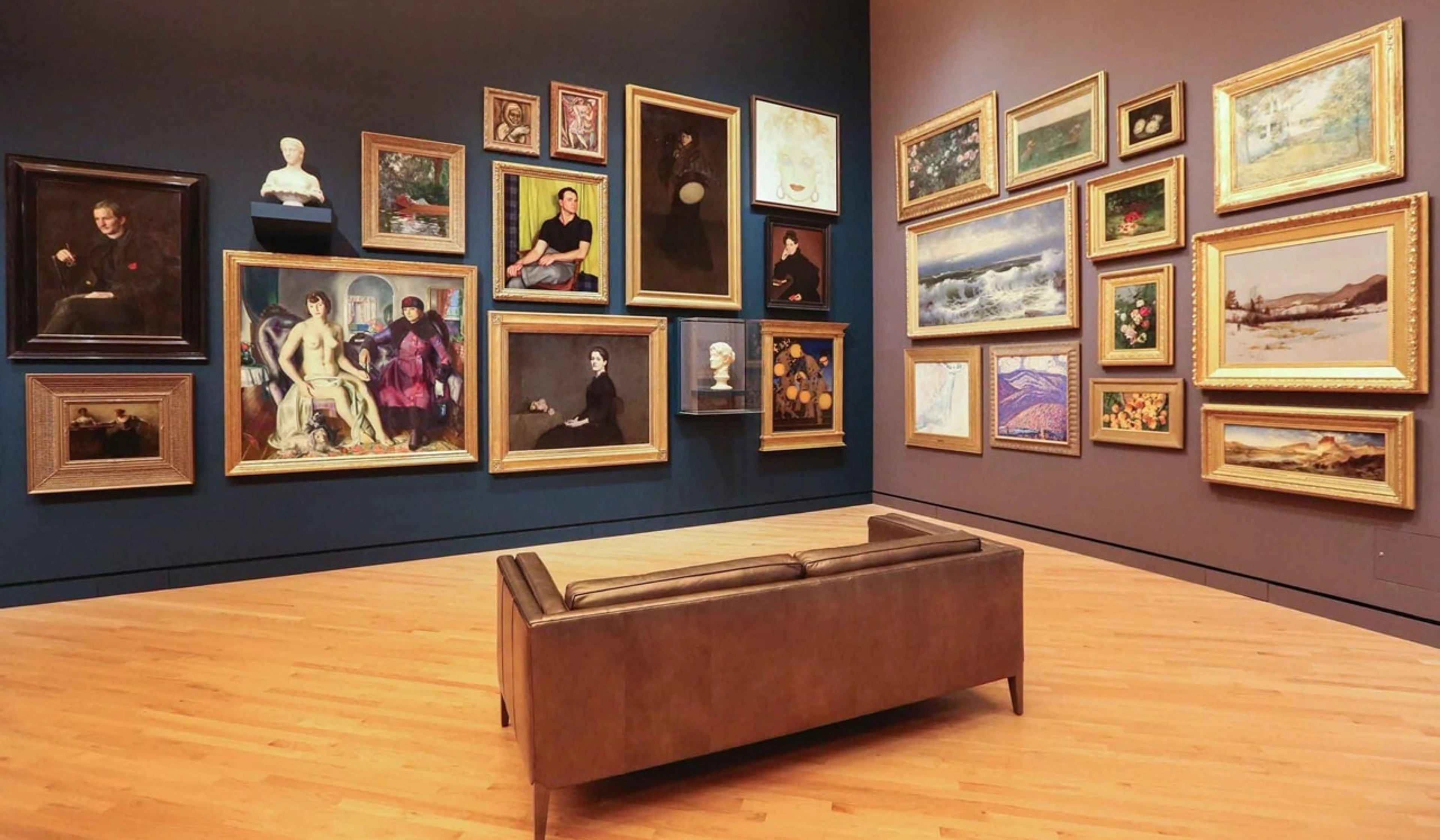
Abstract Art for Every Room: Curating Flow & Feeling at Home
Transform your home with abstract art. This guide explores how to choose pieces for every room – from energetic living spaces to serene bedrooms – creating flow, feeling, and a true reflection of your inner world. Discover color, placement, practical tips, and how abstract art enhances modern interiors.
Abstract Art for Every Room: Curating Flow and Feeling in Your Home
I'll be honest, when I first started thinking about decorating my own space, I felt utterly lost. There were so many rules, so many 'must-haves,' and frankly, it all felt a bit... prescriptive. Like someone else was telling me how my home should feel. And if there's one thing I've learned about myself, it's that I don't particularly enjoy being told what to do, especially not with something as personal as my living environment. Then I stumbled into the world of abstract art, and suddenly, everything clicked. It wasn't about matching my couch or ticking off a design trend. It was about feeling. About creating a vibe, a flow, an unspoken narrative in each room. It turns out, abstract art is less about what you see and more about what you experience. And honestly, what could be more perfect for a home than that? This philosophy is what guides my own art, and what I hope to share with you, exploring how it can transform every space in your home, room by room. So, why dive into the abstract world anyway?
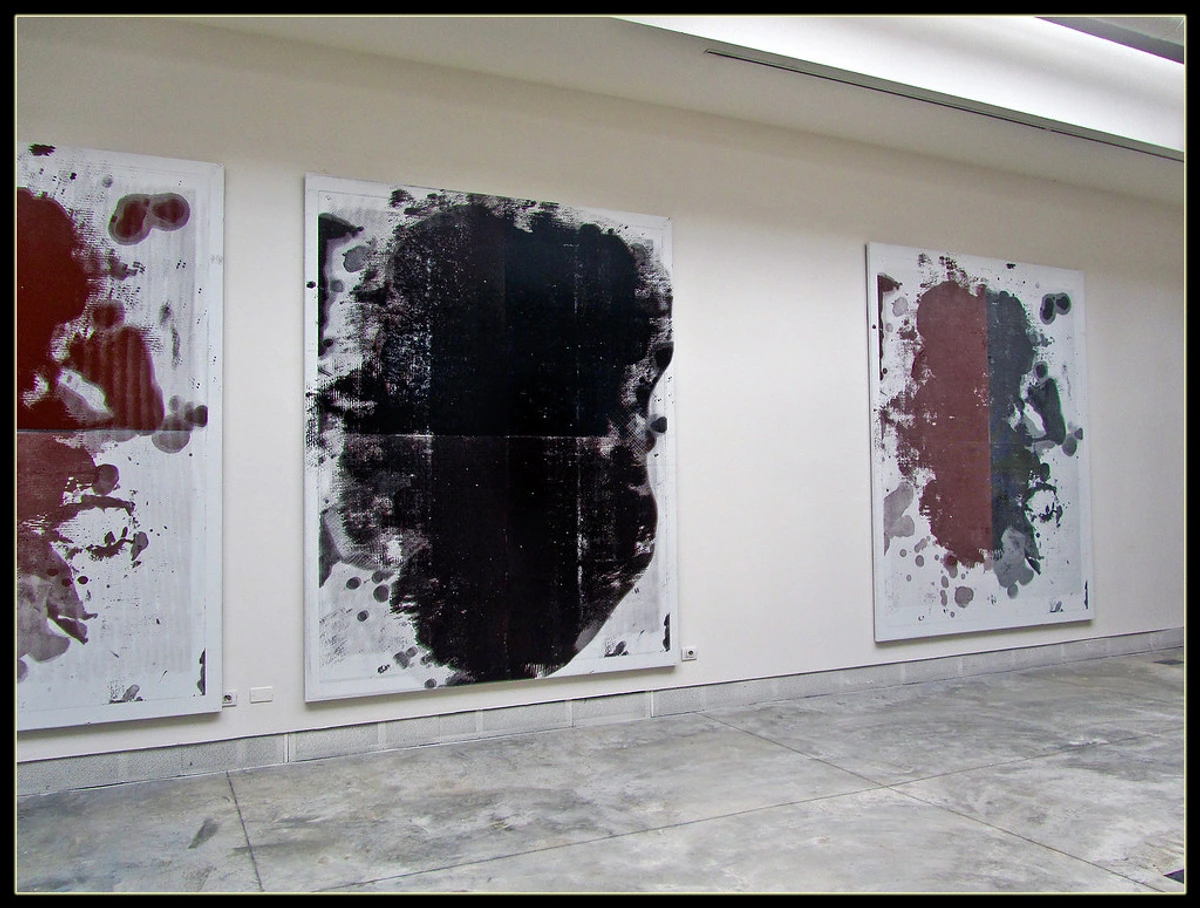
https://live.staticflickr.com/6195/6087778411_164f0d9a2f_b.jpg, https://creativecommons.org/licenses/by-nc-nd/2.0/
Why Abstract Art Anyway? A Personal Revelation
For a long time, I thought art was something you had to 'understand.' Like there was a secret code or a hidden meaning that I, the uninitiated, was missing. But the truth is, abstract art, which emerged powerfully in the early 20th century as a radical break from literal representation, challenging the rigid conventions of academic art and narrative painting that had dominated for centuries, invites you to find meaning not in what’s explicitly depicted, but in what you bring to it. Pioneers like Wassily Kandinsky sought to express inner spiritual realities through pure color and form, while Kazimir Malevich championed supreme geometric abstraction, and Piet Mondrian pursued universal harmony through grids and primary colors. This profound shift allowed artists to explore inner worlds, emotions, and pure forms, directly connecting with the very 'feeling' this article celebrates. This means your personal experiences, your memories, your current mood, or even just your gut reaction. It's about how the colors resonate with your spirit, how the forms echo something within you, or how the overall composition stirs an emotion you didn't even know you were feeling. Whether through the raw energy of gestural abstraction, the serene balance of geometric forms, or the immersive fields of color, each style offers a unique language for inner dialogue. For a deeper dive into its origins, you might enjoy exploring the history of abstract art.
In my own artistic journey, I've found this personal connection to be the most rewarding aspect of abstract art. For instance, a bright, almost neon yellow, combined with a deep, contemplative blue in one of my recent pieces was designed to evoke a sense of hopeful tension – that feeling of pushing through a challenge towards a brighter outcome. When I created it, I started with an energetic, almost chaotic yellow base, then layered in the calming blue, allowing it to subtly obscure and yet highlight the yellow, mirroring the journey of finding peace amidst struggle. It's like the art is gently nudging me towards a brighter outlook in my own studio. And for someone who sometimes struggles to articulate their own feelings, I found abstract art to be a surprisingly eloquent way to express them in my space.
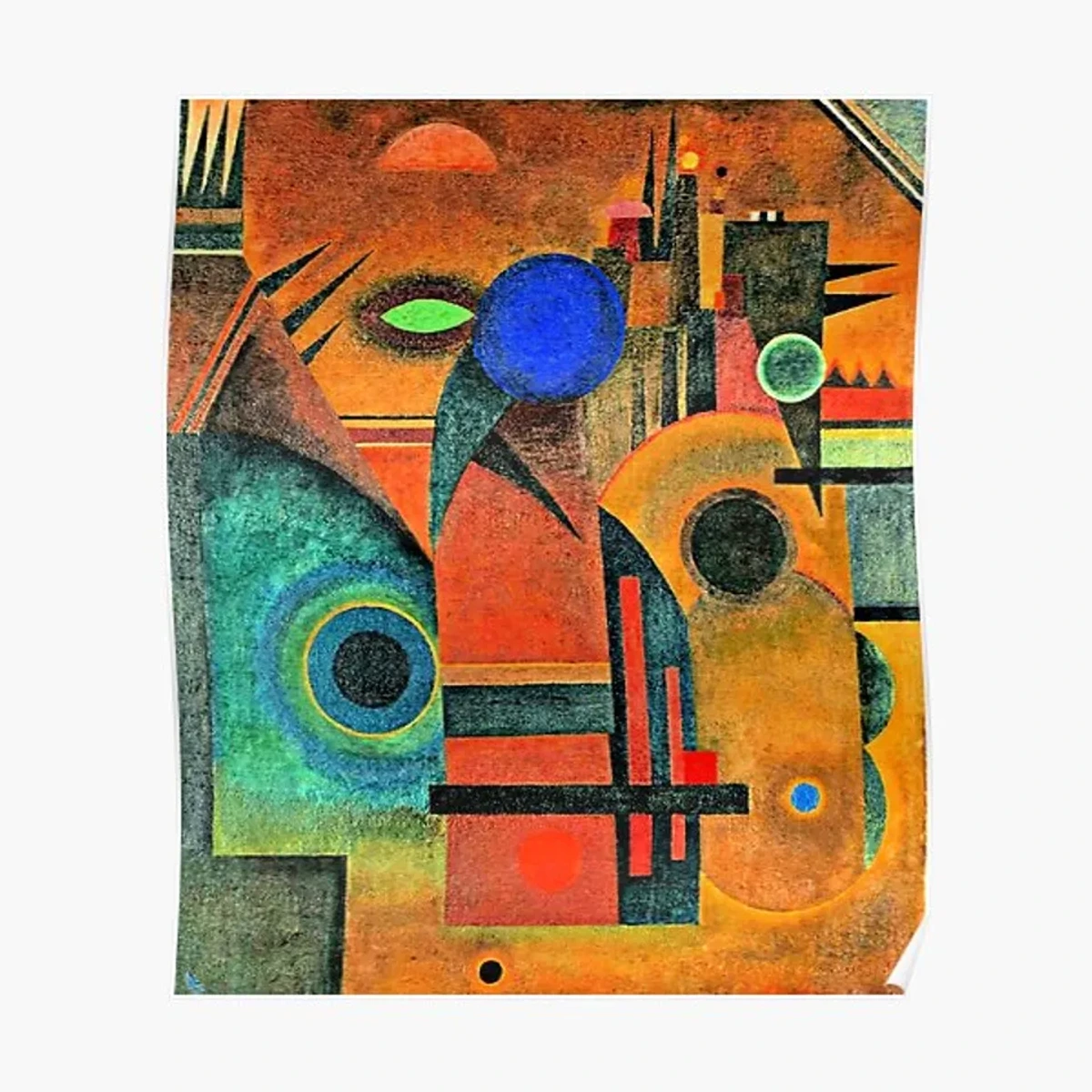
Printerval.com, https://creativecommons.org/licenses/by-nc/4.0/
It’s versatile, too. Unlike a specific landscape painting that might dictate a certain rustic or traditional vibe, abstract art is a chameleon. A bold geometric piece, for instance, can perfectly complement sleek modern lines, while a soft, organic abstract can add a contemporary, unexpected touch to a more traditional, cozy setting. It asks you to feel, not just to look. And trust me, once you start focusing on how art makes you feel, choosing pieces for your home becomes less of a chore and more of a delightful adventure. If you're curious about diving deeper into interpretation, you might find some interesting perspectives on how to read a painting or even how to understand symbolism in art, even abstract ones.
The Dance of Flow and Feeling: Room by Room
I like to think of my home as a collection of different moods, each room performing its own little dance. And because abstract art is so emotionally versatile, as we've just discussed, it's the perfect choreographer for that dance, ensuring a smooth flow from one feeling to the next.
The Living Room: A Symphony of Comfort and Conversation
This is often the heart of the home, isn't it? Where you unwind, entertain, or perhaps, like me, occasionally nap on the couch pretending to be reading. For the living room, I lean towards pieces that evoke a sense of:
- Energy: Think a large, gestural piece – perhaps an ultimate guide to Abstract Expressionism work with bold strokes and vibrant, optimistic colors. Its dynamic elements convey movement and vitality, mirroring the energy of lively conversation and shared moments.
- Serenity: Consider a softer, more fluid abstract – like a Color Field painting or a piece with organic shapes – in muted tones, perhaps flowing blues and greens. Such pieces invite calm through their gentle forms and soothing palettes, ideal for unwinding after a long day.
- Conversation: A complex, layered abstract, perhaps a piece incorporating elements of Lyrical Abstraction or even subtle geometric interplay, can draw the eye and spark dialogue. Its ambiguity and depth encourage viewers to linger, discuss, and find personal connections, making it a natural conversation starter.
A large, vibrant abstract piece can anchor the room, not just sparking conversation but also subtly unifying disparate design elements – tying together furniture, textiles, and other decor. Think of how a painting's bold blues might pick up the subtle blue in a throw pillow, or its soft textures complement the weave of a rug. In my own living room, I have a sprawling piece with sweeping, interconnected forms and a warm yet muted palette, which truly grounds the space and makes the whole room feel more expansive and inviting. It's about creating a living backdrop for life, not just a static display.

https://www.flickr.com/photos/abstract-art-fons/30634352376, https://creativecommons.org/licenses/by/2.0/
I remember once trying to force a very literal landscape painting into my living room, thinking it would add 'charm.' Instead, it just sat there, looking confused next to my modern furniture. The moment I swapped it for an abstract piece with a similar color palette but a much more dynamic feel, the room suddenly felt alive. If you're looking for more general tips, I've found great insights on how to decorate your living room.
The Bedroom: Your Personal Sanctuary (No Judgment Here)
Ah, the bedroom. This is my sacred space, where I retreat from the world, sometimes to write, often to just stare at the ceiling and think about absolutely nothing (and yes, occasionally those profound thoughts just... don't show up, leaving me with only the ceiling). For this room, I gravitate towards abstract art that inspires:
- Calm: Soft, muted tones, like a pastel wash or gentle gradients – think a subtle Color Field painting or a piece with gentle, blurred edges. These subtle shifts and gentle hues are designed to quiet the mind and promote relaxation.
- Introspection: Pieces with blurred edges, subtle textures, or a quiet hum of color, perhaps reminiscent of Lyrical Abstraction. Their elusive nature encourages contemplation and a gentle inward focus.
- Peace: Organic, flowing shapes or a dreamy wash of color that feels like a visual lullaby, echoing forms found in nature or a serene, unfolding landscape. These forms emulate the soothing rhythms of nature, creating a harmonious and peaceful atmosphere.
It's not about making a statement; it's about supporting your rest and reflection. I chose a piece with flowing, organic shapes for my own bedroom, a soft blend of blues and greys, and it genuinely feels like a visual lullaby, settling my mind before sleep. If you're anything like me, your bedroom is also where you occasionally dump laundry. So a piece of art that brings a sense of serenity despite the everyday chaos is truly invaluable. For more ideas on creating your personal haven, check out how to decorate your bedroom.

https://live.staticflickr.com/6090/6059309027_476779f1de_b.jpg, https://creativecommons.org/licenses/by-sa/2.0/
The Home Office: Fueling the Creative Spark (Even When It's Just Bills)
My home office is where I wrestle with ideas, answer emails, and sometimes stare blankly at the screen, hoping inspiration will magically appear. (And sometimes, even with the perfect art, I still find myself staring at the ceiling, but at least it's a beautiful ceiling!) For this space, I look for abstract art that ignites:
- Creativity: Bold strokes, vibrant color clashes, or energetic compositions, perhaps a dynamic ultimate guide to Expressionism or something with a strong, improvisational feel. Its dynamic forms and unexpected color combinations can spark new ideas and break through mental blocks.
- Focus: Geometric patterns, clean lines, or a minimalist abstract, maybe a piece of ultimate guide to Cubism or Minimalist Abstraction, to clear mental clutter. Its orderly compositions can help anchor the mind and promote concentration.
- Playful Distraction / Mental Escape: A piece with depth or implied movement, perhaps through layered forms or subtle shifts in color, that offers a point of visual meditation during intense work. Allowing your eyes to wander through its abstract forms can offer a refreshing break, preventing burnout, especially when you hit a mental block or need a moment during a long meeting.
It's about finding that sweet spot that helps you get stuff done, or at least feel good trying. For my own office, I chose a vibrant, layered piece with implied motion, a subtle nod to the constant flow of ideas I hope to generate. It reminds me that even when the work feels stagnant, there's always movement beneath the surface. One time, I had a very detailed landscape print in my office, and all it did was make me wish I was out in a landscape, not stuck at my desk. Swapping it for a dynamic abstract piece, full of implied movement, actually helped me focus. It's funny how that works. For more office décor ideas, this article on how to decorate your office might be useful.
Beyond the Usual Suspects: Kitchen, Bathroom, Hallways (Yes, Really!)
Don't forget the often-overlooked spaces! For the Kitchen, consider a small, vibrant piece with dynamic, swirling forms that evoke culinary energy or a pop of unexpected color to make mundane tasks a little brighter. Perhaps a piece with bright reds and oranges, reminiscent of a vibrant spice market, or cool blues and greens that evoke fresh ingredients. I've seen how a simple abstract print, even a small one, can infuse a kitchen with playful energy, turning daily chores into moments of quiet contemplation. In my own kitchen, a small, vibrant abstract of swirling blues and greens hanging next to the sink makes washing dishes feel almost... meditative, like watching ocean currents swirl. For kitchens, consider prints under glass or acrylic for easy cleaning and protection from splashes. In the Bathroom, a calming abstract can transform it into a spa-like retreat, even if it's just a tiny powder room. Think flowing blues and greens, or a soft, organic abstract that evokes tranquil waters or serene landscapes. When choosing for a bathroom, remember practical considerations like moisture resistance or ease of cleaning; prints under glass or acrylic can be excellent choices. I find muted, ethereal abstracts particularly effective here; they create a soothing atmosphere without demanding too much attention. And Hallways? They're perfect for creating a visual journey, guiding you from one feeling to the next with a series of abstracts – perhaps a set of smaller, complementary pieces that tell an unfolding story, or a single elongated work that pulls the eye along. It can be a dance of light and shadow, a quiet hum as you pass by, or a burst of color just before you enter another room. I once hung a small, intensely colorful abstract in my notoriously bland hallway, and suddenly, that previously forgotten space felt like an intentional part of the home. It made me smile every time I walked by. It's amazing what a little unexpected art can do, turning a mere pass-through into a moment of visual delight.
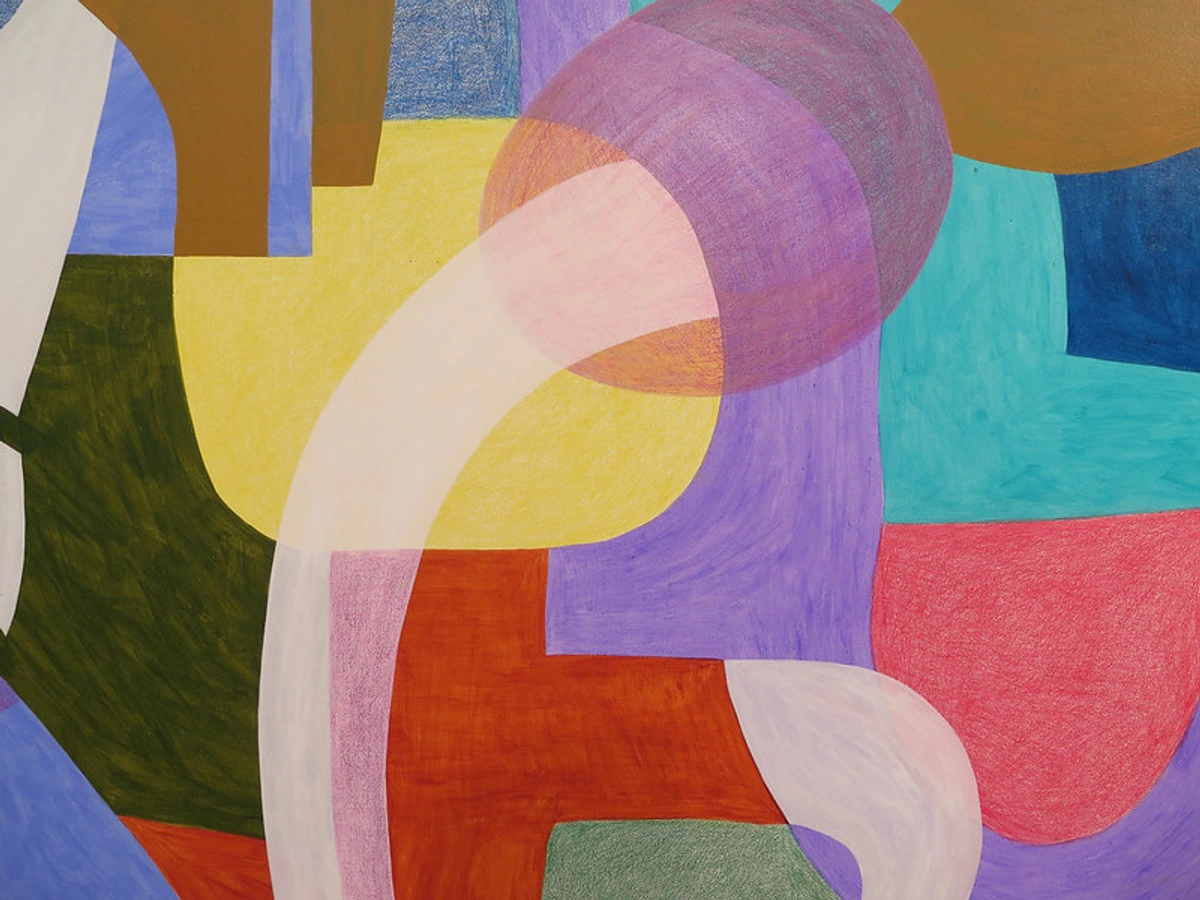
https://www.flickr.com/photos/42803050@N00/31171785864, https://creativecommons.org/licenses/by-nd/2.0/
For bathroom-specific art, you can also check out art for bathroom.
Room-by-Room Abstract Art Mood Guide
To make it even easier to visualize the possibilities, here’s a quick reference guide to matching abstract art with different moods in your home:
Room | Desired Mood / Vibe | Abstract Art Characteristics | Suggested Abstract Style/Technique |
|---|---|---|---|
| Living Room | Energy, Serenity, Conversation | Bold strokes, vibrant colors, fluid compositions, complex layers | Abstract Expressionism, Lyrical Abstraction, Color Field |
| Bedroom | Calm, Introspection, Peace | Soft, muted tones, gentle curves, blurred edges, organic shapes | Color Field, Organic Abstraction, Lyrical Abstraction |
| Home Office | Creativity, Focus, Mental Escape | Energetic compositions, geometric patterns, minimalist designs, depth | Abstract Expressionism, Geometric Abstraction, Minimalist Abstraction |
| Kitchen | Personality, Creativity, Energy | Unexpected pops of color, dynamic forms, vibrant patterns | Gestural Abstraction, Vibrant Pop-Art inspired Abstract |
| Bathroom | Calm, Spa-like, Tranquil | Muted tones, flowing forms (consider practicalities), soft washes | Organic Abstraction, Color Field, Ethereal Abstract |
| Hallways | Visual Journey, Flow | Series of varied abstracts, creating flow and narrative, elongated works | Serial Art, Varied Abstract, Narrative Abstract |
Remember, this guide is a starting point – your intuition is the ultimate curator for your unique space.
Curating Your Space: Trusting Your Intuition
So, you're ready to dive in, but how do you actually choose these magical pieces? My philosophy is simple: trust your gut. It’s your home, your sanctuary, your messy beautiful life. It should reflect you.
Color & Emotion: It's Personal
I've spent years immersed in color, not just reading theories but experiencing them daily as I mix paints and watch them interact. While certain colors often have common psychological associations – red for energy, blue for calm, yellow for joy – remember that your personal emotional response is paramount. Red can be energizing to one person, overwhelming to another. Blue might be calming or melancholic. Don't worry about what the 'rules' say; focus on your own emotional response. As an artist, when I choose colors for my own pieces, it's never just about aesthetics; it's about the feelings I want to imbue, a quiet whisper or a bold roar of emotion that I hope resonates with someone else's inner world. I often find myself drawn to vibrant, optimistic colors, even on days when I feel anything but. (Perhaps it's a form of artistic self-medication, who knows?) If you're looking for pieces that evoke certain feelings, you can always explore my art for sale and discover the emotional language of color in abstract art further.
Scale & Placement: Bigger Isn't Always Better (But Sometimes It Is)
This one tripped me up for a while. I thought a big wall needed a big painting, always. But sometimes, a smaller, impactful piece, perfectly framed, can have a greater presence than a sprawling canvas that overwhelms the space – like a perfectly chosen jewel that catches the light, rather than a sprawling tapestry that simply covers the wall. I remember agonizing over this in my own space, trying to force a huge piece where it just didn't belong, only to find a smaller piece utterly transformed the corner. Consider the furniture around it, the light, and the overall 'breathing room' the art needs. It’s a dance between the art and the wall it lives on. A good rule of thumb for hanging height is to center the artwork at eye-level for a standing person (roughly 57-60 inches from the floor to the center of the piece), or if placing above furniture like a sofa, ensure the bottom edge is about 6-12 inches above the furniture. If you're unsure where to even begin with hanging things, there are some great tips on how to decorate a wall.
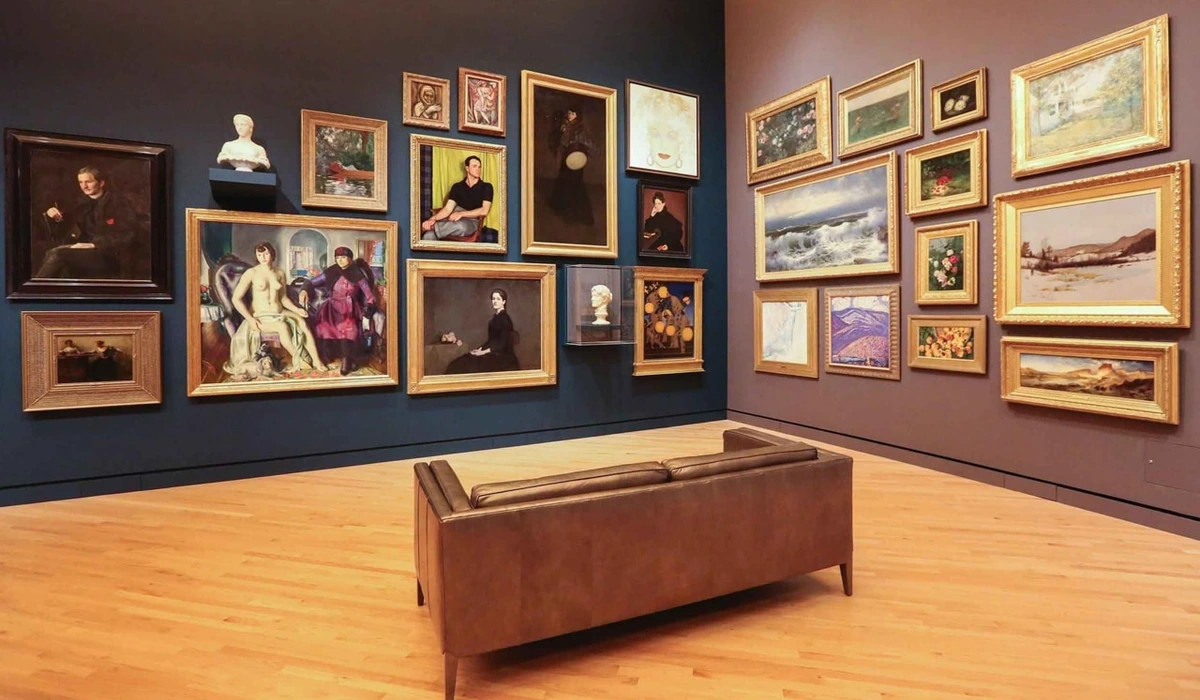
https://mastersatart.com/, https://creativecommons.org/licenses/by-nc/4.0/
Practicalities of Displaying & Acquiring Your Art
So, you’ve picked out a few pieces, or maybe you’re just dreaming of them. But what about the nitty-gritty of getting them on your walls and making them shine? Sometimes, the practicalities can feel like the hardest part, right?
Framing Considerations
Ever stared at a bare wall, a beautiful painting in hand, and wondered: 'To frame or not to frame?' Choosing the right frame can dramatically transform an abstract piece and its relationship with your room. A floating frame can give a canvas a modern, airy feel, while a traditional mat and frame can add structure and formality. Sometimes, no frame at all lets the raw edges and energy of the canvas speak for itself. I remember spending hours agonizing over frames for my own pieces, wondering if I was doing them justice. There's a subtle art to it, making sure the frame enhances, not competes with, the artwork. Sometimes, a simple, sleek border is all that's needed to allow the canvas to truly breathe. (And if you’re like me, sometimes the frame is just a temporary solution until you find the perfect frame, which might take years. The struggle is real, and sometimes a simple command strip has to be a hero!) Think about the existing finishes in your room and how the frame can either complement or create an interesting contrast. Finding the perfect frame can feel like a quest worthy of Indiana Jones, but oh, the treasure when you find it! For a deep dive into this topic, you might find the ultimate guide to framing your artwork useful.
Lighting Your Artwork
So, you've found the perfect abstract piece, but is it truly shining its brightest? Good lighting can bring your abstract art to life, revealing nuances in color and texture that might otherwise go unnoticed. I've seen my own paintings utterly transformed by the right light – suddenly, a subtle stroke I thought was minor becomes a central feature. It's like the art finally gets to tell its full story.
Natural light is always beautiful, but direct sunlight can fade artwork over time, so be mindful of placement. Spotlights, track lighting, or even picture lights can highlight your pieces, making them focal points. Experiment with different light temperatures – warm or cool – to see how it affects the mood of the art and the room.
Budgeting for Abstract Art
Collecting abstract art doesn't have to break the bank. I used to think art was only for the wealthy, a notion that always felt terribly unfair. That's why I've made it a point in my own practice to create a range of options, from original canvases to more accessible prints, making beautiful art available to more people. You can find beautiful pieces at various price points. Originals offer a unique, tactile connection to the artist's hand, while high-quality prints allow for a wider selection and flexibility in display. Limited edition prints are often more affordable than original paintings and allow you to own a piece of an artist's vision without the high cost. Emerging artists, local art fairs, or online galleries (like where to buy art) are excellent places to discover unique works. It's about finding a piece you love, regardless of its price tag, that resonates with your emotional landscape.
Considering the Wall Material
Before you grab your hammer, take a moment to consider what kind of wall you're dealing with. Drywall, plaster, brick, or concrete each require different hanging methods and hardware. Investing in the right anchors or picture hooks for your specific wall type will save you headaches (and potential repair jobs) in the long run. For heavier pieces, especially, a stud finder can be your best friend. Don't be like me and assume a thumbtack will hold a multi-pound canvas – I learned that lesson the hard way, with a dramatic thud and a very small dent in my floor (luckily, no art was harmed!).
Thinking About Your Overall Collection
When adding a new abstract piece, it’s not just about the individual artwork, but how it converses with everything else in your home. Think of your space as a symphony, and each piece of art as an instrument. Does the new piece provide a harmonious melody or a surprising, delightful dissonance? I often consider whether a new painting enhances the existing flow of colors and textures, or if it introduces a compelling contrast that sparks new energy. It's an ongoing dialogue between your new acquisition and the narrative already unfolding in your space.
Temporary Display Solutions & Rental Friendly Options
What if you're in a rental, or just not ready to commit to holes in the wall? Luckily, there are plenty of options! Command strips and removable adhesive hooks are a renter's best friend for lighter pieces. For larger, unframed canvases, leaning them against a wall on a console table, dresser, or even directly on the floor can create a chic, casual gallery vibe. You can also explore lightweight panel art or prints on acrylic that come with their own hanging systems designed for minimal wall impact. It means you can still experiment and curate your space with abstract art, even if permanence isn't on the cards right now.
Trusting Your Intuition: It's Your Home, After All
At the end of the day, curating your home with abstract art is a personal journey. There's no right or wrong. If a piece speaks to you, if it brings you joy or a sense of calm, then it belongs in your home. Don't let trends or external pressures dictate your choices. Your home should be a reflection of your inner world, a place where you truly feel at ease. If you feel a connection, I encourage you to explore my art for sale directly through my website; perhaps a piece there will speak directly to your unique vision for your space. Or consider a custom commission, tailored to your exact feelings.
Frequently Asked Questions (FAQ)
Here are a few questions I often get asked, or that I've asked myself along the way:
- "Can abstract art fit into traditional décor?" Absolutely! The contrast can be incredibly striking. A minimalist abstract piece in a room with antique furniture can create a beautiful dialogue between old and new, adding a contemporary twist without clashing. It's about finding harmony through juxtaposition.
- "How do I choose the right size?" A good rule of thumb is to consider the wall space. For a large, empty wall, a piece that takes up about two-thirds of the wall space above furniture (like a sofa) often works well. For smaller nooks or galleries, smaller pieces or a collection of varied sizes can create interest. Don't be afraid to tape out the dimensions on your wall with painter's tape to get a feel for it before committing. You might find more general advice on how to decorate your home useful too.
- "Where should I buy abstract art?" Well, you're on an artist's website, so I'm naturally biased! But honestly, start by exploring online galleries, local art fairs, or even studio visits. Find an artist whose work resonates with you. Many artists, myself included, have a range of art for sale directly through their websites, making it easier to find unique pieces that speak to you. You can even learn about my journey here on my timeline.
- "Is it okay if I don't 'get' abstract art?" Of course! The beauty of abstract art is that it doesn't demand to be 'gotten' in the traditional sense. It invites interpretation, feeling, and a personal response. If you look at a piece and it simply brings you joy, or sparks a thought, or just makes you feel good, then you 'get' it exactly as much as you need to. It's not a puzzle to solve; it's an experience to have.
- "How do I choose abstract art if I'm a complete beginner?" It's completely normal to feel a bit lost when abstract art doesn't depict something familiar. My best advice for beginners is to start with your gut feeling. Don't overthink it. Look for pieces where the colors simply make you happy, or the shapes create a sense of calm, or the overall vibe just feels 'right.' You don't need to understand it intellectually; you just need to feel a connection. Sometimes, even just picking a piece because it has your favorite color can be the perfect starting point. The 'meaning' will often unfold as you live with it.
- "How do I care for my abstract art?" Caring for your abstract art ensures its longevity. Generally, keep artwork out of direct sunlight to prevent fading. Maintain stable room temperature and humidity, avoiding extreme fluctuations. For dusting, use a soft, dry cloth or a gentle brush. If your piece is framed under glass, you can clean the glass with a non-abrasive cleaner, but be careful not to get any moisture on the artwork itself. For specific instructions, especially for original pieces, always consult the artist or gallery.
- "What if I have limited wall space?" Limited wall space is no barrier to enjoying abstract art! Consider smaller pieces that can be displayed on shelves, side tables, or even lean casually against a wall on a dresser. You can also create a gallery wall using a collection of smaller abstracts, perhaps mixed with personal photos or mirrors, to maximize impact in a compact area. Think vertically too – a narrow, tall piece can draw the eye upwards and make a room feel larger. For a deeper dive, explore abstract art for small spaces: maximizing impact in compact areas for more ideas.
- "Can I mix abstract art with other art styles?" Absolutely, and often, it creates the most dynamic and personal spaces! Abstract art can act as a modern counterpoint to traditional portraits or landscapes, creating visual tension and intriguing dialogue. Its non-representational nature allows it to harmonize with almost any other style, from classical to contemporary, by picking up on colors, textures, or forms present in the room or other artworks. It's all about balanced juxtaposition and what feels right to you.
- "How do I know if a piece is 'good' abstract art?" This is a wonderful question, and the answer is refreshingly simple: if a piece of abstract art resonates with you, if it evokes an emotion, sparks a thought, or simply brings you joy, then it is 'good' art for your space. There's no objective checklist for abstract art; its value is deeply personal. Trust your gut feeling, that initial magnetic pull or sense of peace. If it connects with your inner world, it's good. Period.
- "What about abstract art for rental properties or temporary display?" Living in a rental or preferring flexibility doesn't mean you can't enjoy abstract art! Command strips are excellent for lighter framed pieces, offering a strong hold without wall damage. For larger, unframed canvases, consider leaning them against a wall on a console or floor for a contemporary, relaxed look. Many artists also offer high-quality prints on paper or acrylic that can be displayed with minimal fuss, using picture rails or easel stands. It's all about creative solutions to make art a part of your temporary or evolving space.
My Final Thoughts: More Than Just Decoration
For me, art has always been more than just something pretty to hang on a wall. It's a reflection, a companion, a silent storyteller. And abstract art, in particular, offers this incredible freedom to shape the emotional landscape of your home. It allows you to create spaces that don't just look good but feel right. Spaces that evolve with you, that comfort you on a bad day, and celebrate with you on a good one. This journey of feeling and flow, of expressing the unspoken, is precisely what I strive for when creating my own abstract pieces, mirroring the experience I hope you have in your home. I remember one particularly dreary winter, my home felt... grey. I brought in a new abstract piece, bursting with warm yellows and reds, and it wasn't just a splash of color; it genuinely shifted the atmosphere, making the space feel warmer, more inviting, like a quiet sunbeam. If you're ever near 's-Hertogenbosch, Netherlands, I'd genuinely love for you to visit my Den Bosch museum to experience my art in person. It's a journey, and I'm happy to share it with you.




